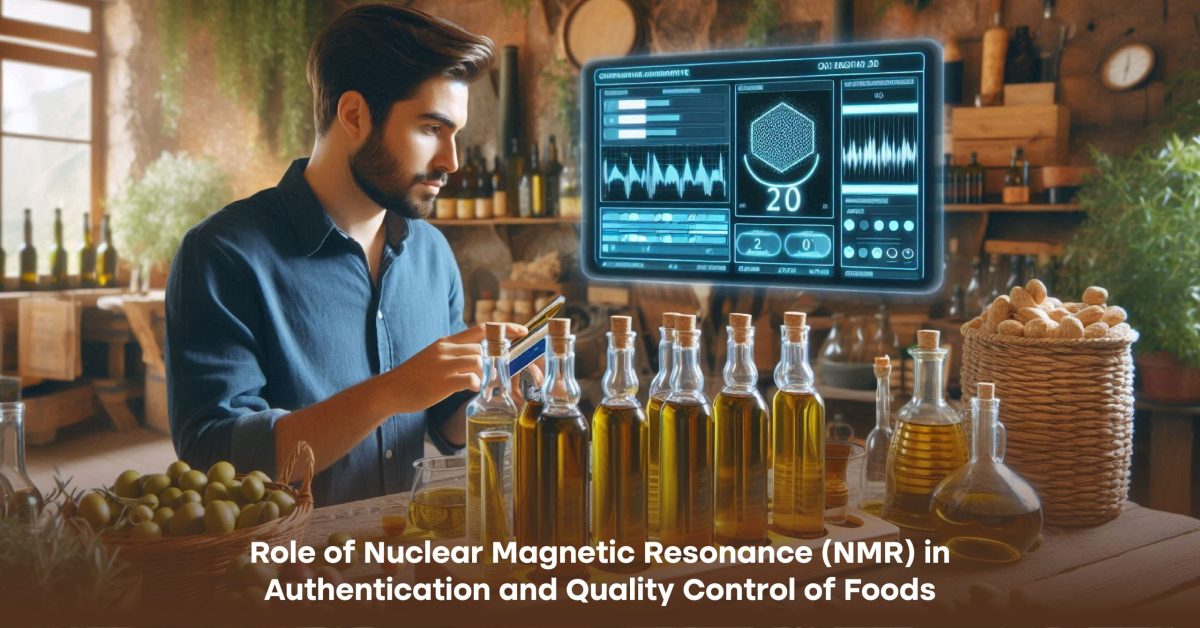The globalized food chain increases the demand for food authenticity and quality control. On one hand, the consumer demands assurance as to exactly what he or she is consuming on the other, governments and their regulatory agencies set strict guidelines for curbing such fraudulent activities and guaranteeing public health. Among the advanced tools developed in answer to these demands, one of the most important and powerful analytical techniques developed in response is Nuclear Magnetic Resonance (NMR) spectroscopy. NMR is non-invasive and very accurate, with a wide range of applications. Applications include food authentication, quality assessment, and safety verification. With the developments and magnificence of strategies in food adulteration, NMR spectroscopy became a significant method to determine even the smallest adulterations, confirm the geographical origin, and ensure that the specifications are met to comply with labeling standards.
Introduction to NMR in Food Analysis
Nuclear Magnetic Resonance, often shortened as NMR, is a spectroscopy technique that utilizes atomic nuclei properties of being magnetically responsive. Since nuclei of some elements resonate when placed in a magnetic field at a frequency dependent on the surrounding environment, scientists can get detailed information at the molecular level about the sample. This technique has proven particularly valuable in food science, where it is now possible to directly analyze complex food matrices without much sample preparation. Additionally, NMR is highly sensitive to a wide range of detection that includes both polar and non-polar compounds, making it ideal for detailed food profiling.
In food authentication and quality control, NMR is used to verify the authenticity of food products by detecting even trace levels of adulterants in analyzing their chemical composition. Its application runs through various types of foods, such as meats, dairy, fruits, oils, and beverages, providing a highly robust approach to determining the purity and quality of food items.
Detection of Food Frauds by Application of NMR
Global food fraud is on the rise – it ranges from misbranding, adulteration, and counterfeiting. It is nowadays a global issue in terms of mislabeling, adulteration, and counterfeiting. Its accuracy in detecting even slight changes in chemical compositions is why NMR is a perfect tool for identifying fraud. It has mainly been used in the authentication of high-value food products such as meat, coffee, honey, and olive oil.
For example, in meat authentication, NMR spectroscopy has been used to differentiate between various animal species based on their chemical fingerprints characteristic for every species. It also detects the replacement of pricey meats, such as lamb, with pork or beef. A similar case is seen in olive oil, where NMR verification identifies whether a product sold is extra virgin olive oil or if it is mixed up with cheaper grades of oil.
NMR’s potential for geographical origin verification also includes the detection of food fraud. Some of the high-value food products include expensive wines, cheeses, and fruits, whose market price depends on the geographical indication attributed to that food. Through the isotopic ratio of specific elements in the food, NMR is able to determine the region of origin, thus reducing the chances of such a food being mislabeled. This also provides assurance that any product carrying the mark Protected Designation of Origin (PDO) or Protected Geographical Indication (PGI) indeed originates from that region.
